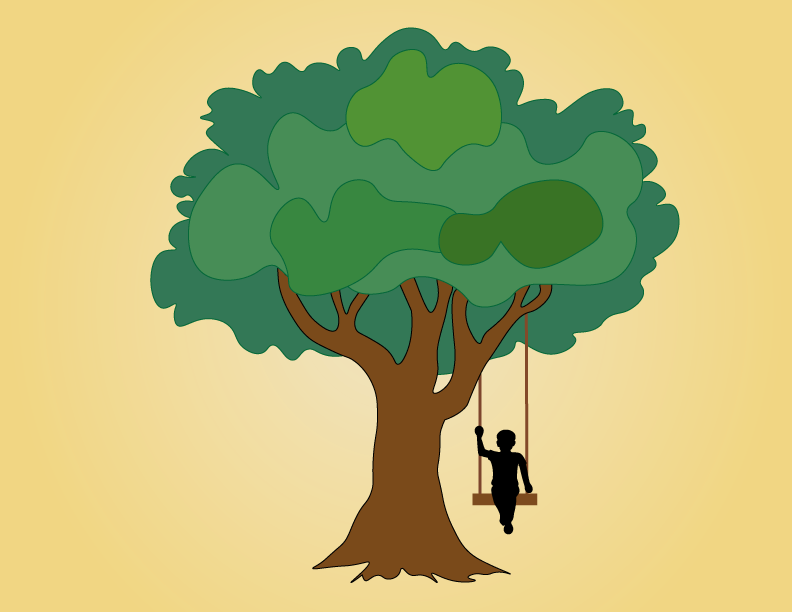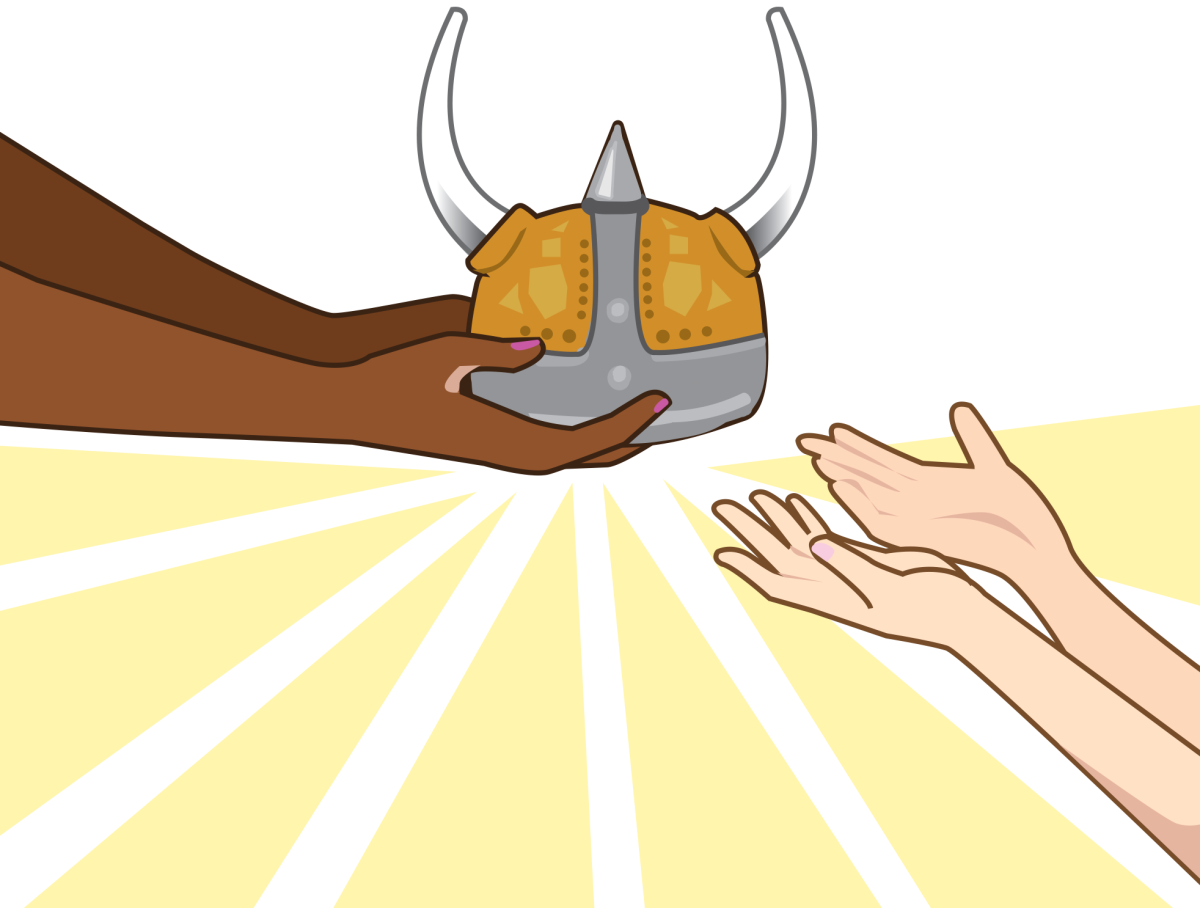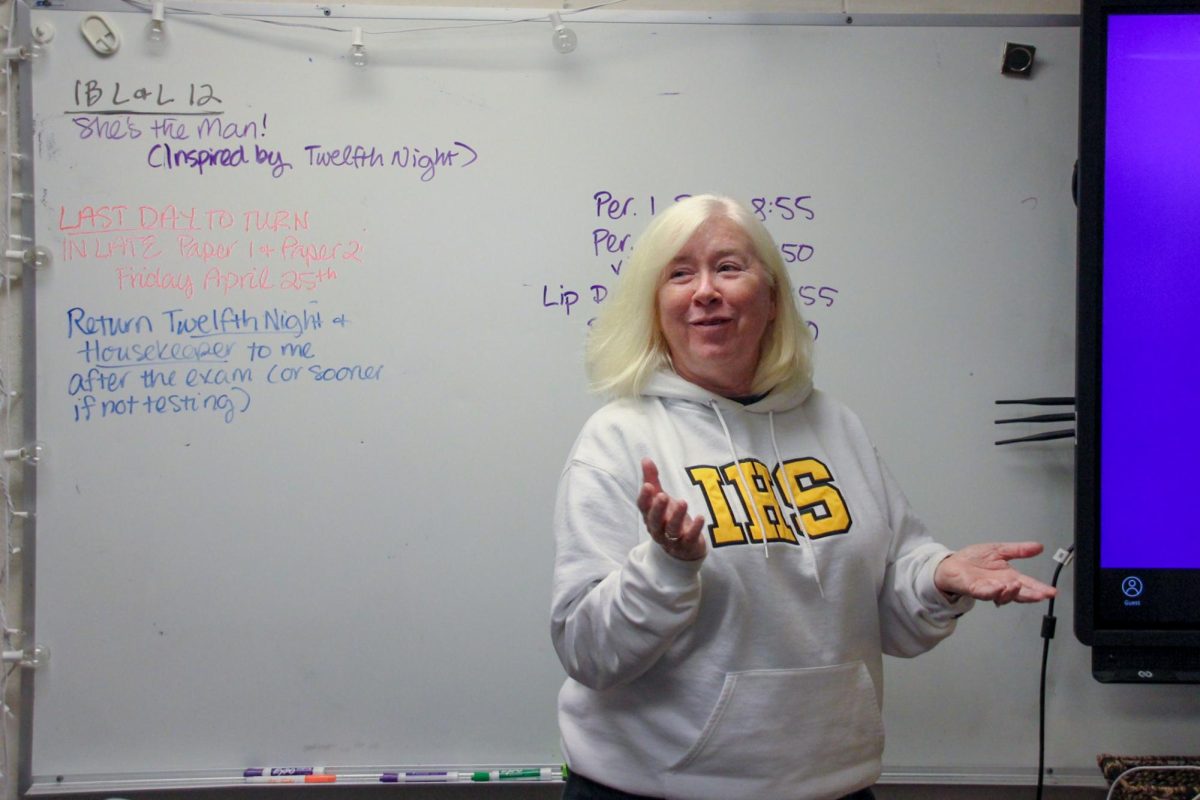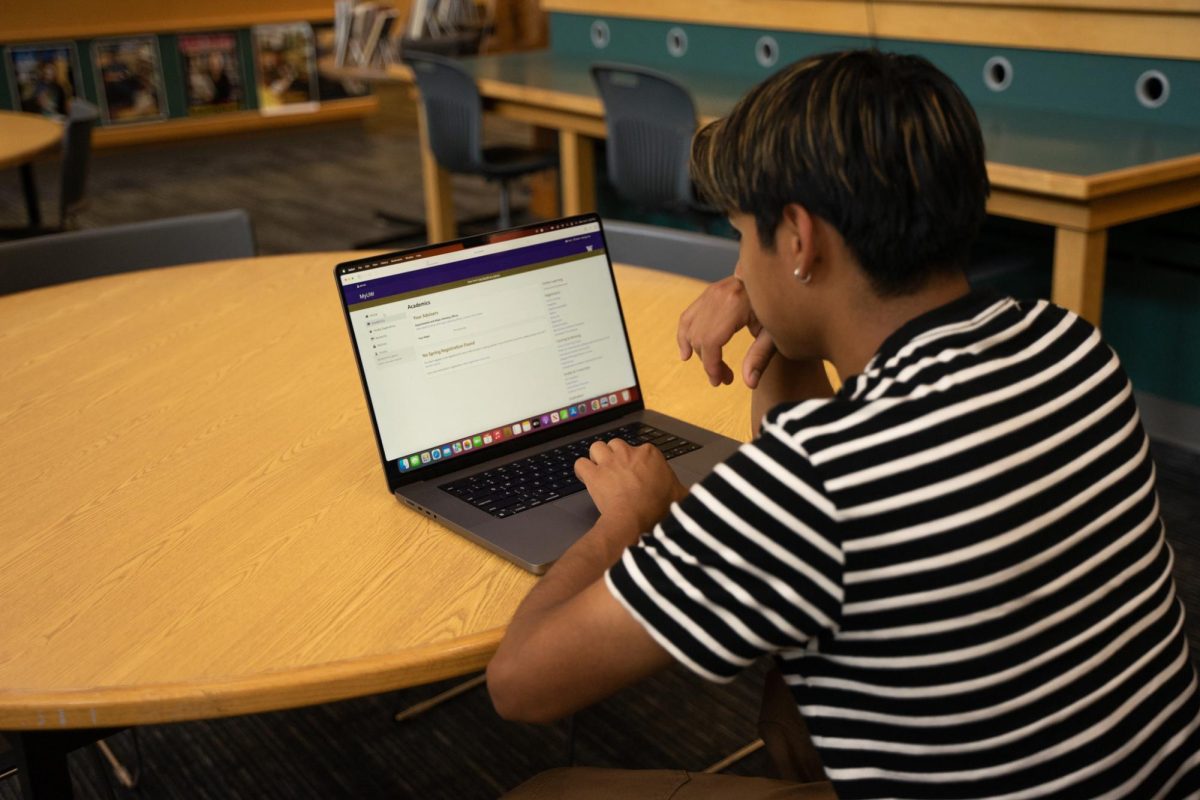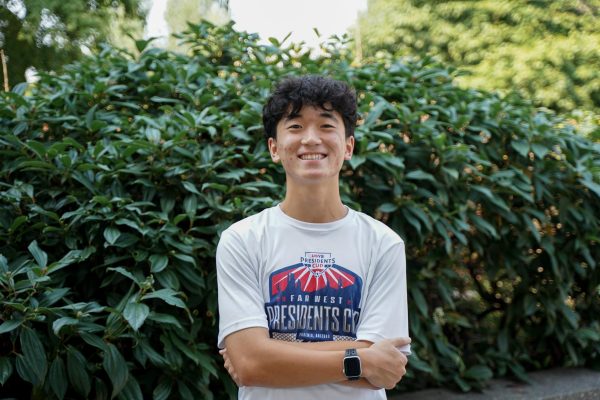Beneath the surface
Loneliness is a state of discomfort that occurs when one perceives a gap between one’s desire for social connection and their actual experience of it. According to the Ballard Brief, a student-led research library at Brigham Young University, Generation Z is the loneliest generation the world has seen. Due to the effects of the COVID pandemic and an increase in the use of technology, Gen Z struggles especially with forming deep connections.
Senior Vicky Hawkins* (she/her) transitioned back to in-person learning in her freshman year of high school. Hawkins said she didn’t know anyone at her new school and had a hard time making close friendships.
“I feel like loneliness just feels like you don’t really have an immediate person to talk to,” Hawkins said. “You just feel like you have to do everything alone. There’s not really anyone you can talk to or feel comfortable with or anyone you can just go to if you’re having a rough day, which can be hard, because I think it’s very important that everyone has at least one person that they feel like they can talk to no matter what’s going on with them.”
According to a Nordic News survey of 140 respondents, 21% said that they don’t feel a sense of belonging in social situations. Additionally, the Healthy Youth Survey reported that from 2010 to 2023, the percentage of NSD students who have met the threshold for probable anxiety disorder has increased by four percentage points. For those who suffer from social anxiety — a mental condition characterized by intense and persistent fear of social situations where one may be judged, scrutinized or embarrassed — it can be stressful to be surrounded by new, unfamiliar people and it’s even considered a leading factor for experiencing loneliness.
“I find that in medium-sized settings, I’m fine, but when it comes to being in a really large, crowded event where a lot of things are happening at once, I get really overwhelmed, and I’ll just shut down sometimes and get really quiet,” Hawkins said. “Not because I don’t want to be there, but just because I’m trying to make sure that I feel comfortable, or that I feel like I know what’s going on. If I don’t know what’s going on, I feel uncomfortable.”
Junior Brianna Pena* (she/her) said that she prefers and strongly believes in quality friendships over quantity. However, Pena said that there are moments when it can still feel especially lonely to not have a group of people to constantly spend time with.
“Not everybody needs a group, but so many activities are considered more fun if you have a group,” Pena said. “You see people post with all their friends on social media. Or in the hallways, you always hear laughs travel down the hallway, or people walk on their phones if they feel awkward, or at lunch, you don’t have anybody to sit with because you don’t have a group of friends, or the couple friends you do have don’t have your lunch. That’s when it’s hardest.”
Pena said that she’s also grown accustomed to noticing loneliness in those around her. The feeling of loneliness is mainly a shared experience, she said, but not everyone considers it to be a negative thing. Pena added that there’s a difference between feeling lonely and choosing to spend time by yourself.
“I can see some kids, I’ve never seen them with another person,” Pena said. “I always see them by themselves, but some of them like it like that. Some of them have one friend. Some of them like their hobbies. That’s all they do. That’s all they need.”
Junior Caleb Rojas* (he/him) said that while he’s had negative experiences while feeling lonely in the past, he’s learned that spending time alone isn’t necessarily a cause for loneliness but rather a vital way to grow as an individual.
“Whether it’s emotionally or physically, I think there’s a lot of different ways to be alone, but I think everyone is lonely at some point during their lives,” Rojas said. “For me personally, I often do a lot of reflecting and thinking when I’m alone, and that’s a super big way I can improve myself and learn from myself and change by being alone because no one’s distracting me. It’s just me when I’m thinking.”
Pena said she’s noticed that it’s considered abnormal to see a person out in public by themselves. She said that subconsciously, she’s always assuming that that person must be expecting someone. Yet, she stressed that being content with going out alone is a strong sign of self security.
“If you’re uncomfortable with yourself, you’re gonna be a thousand times more uncomfortable in a group of people, because you’re thinking about what everyone else is thinking about,” Pena said. “‘Oh, how am I presenting myself?’ But if you’re comfortable with yourself, if you’re comfortable with being alone and having a good balance, you are doing dandy.”
Clicks and cliques
While loneliness is a complex combination of emotions that varies between individuals, there are often common causes. For Hawkins, the COVID-19 quarantine had a significant impact on her social life as she lost connection with her friends and struggled to keep a close group when she was in middle school. A 2023 study by Dr. Claryn Kung that was published by the National Insitutes of Health concluded that the COVID-19 pandemic strongly impacted individuals’ lives in ways that made them more lonely. Specifically, it stated that, from a sample of young people aged 16–24 years, 45% of respondents said their social life worsened during the pandemic, 22% found it difficult to maintain existing relationships, and 35% reported that they had never felt more alone before.
Hawkins also said her feelings of isolation were exacerbated by her lack of access to social media platforms, making her resort to using Zoom meetings to interact with her friends.
“I’m a really social person, but it was hard to connect with people online,” Hawkins said. “After COVID, I feel like it took maybe a year and a half to find a group of people I felt decent with, and then maybe another year after that to find people that I actually thought could be my friends long term.”
However, some say that while social media provides many social benefits, it also plays a major role in student loneliness. According to a survey conducted by the Pew Research Center, over 50% of teens are daily users of social media, and almost 20% of teens use it constantly. Additionally, a 2023 NIH study by Tore Bonsaksen concluded that individuals with high social media use are more likely to be lonely than those with less usage, even more so for people who primarily use social media to maintain relationships.
Hawkins said she thinks that this is because social media causes superficial and parasocial connections as people display themselves inauthentically on digital platforms, making it difficult for them to show their true personality offline and establish deep relationships without being misunderstood. This is supported by a 2022 article by Lizzy Winstone in the Journal of Early Adolescence that says teens are especially vulnerable to excessively focusing on self-inflation, feeling pressured to edit their online postings and fabricating an unrealistic depiction of themselves.
“All we really know is what they’re portraying themselves as online, which does not even scratch the surface of who a person is,” Hawkins said. “Then if you meet that person in person, they’re forced to adhere to how they present themselves on social media.”
With regret, Pena shared that, while on vacation, her first instinct was to get photos that would look good for a social media post. She believes that many students have similar experiences and should not seek validation from social media platforms as simply viewing and creating posts can contribute to personal insecurities and disconnection.
“You can give yourself validation. You can get validation from your teachers, from your parents,” Pena said. “Strive to do well and to get validation but not to get it on social media.”
Based on his own experiences, senior Broden Griner (he/him) believes that social media is a major contributor to loneliness among teens because it causes students to form unrealistic and disappointing standards for their social environment, making students feel that they need to have a lot of friends in order to avoid being lonely. In reality, he believes that people only need one or two quality friends to avoid loneliness.
“I know for a little bit, I was always like, ‘Dang, all these people are out doing so much fun with all their friends and I’m not doing any of that,’” Griner said. “Then recently, like last year I was like, ‘You know what, I only have a couple close friends, but I do stuff with them all the time.’ My friends are all I need.”
Pena said Inglemoor’s clique-based social environment also plays a considerable role in feelings of exclusion, where small, exclusive social groups within clubs, sports and other areas of school cause those outside of them to feel isolated. Similarly, Hawkins said that social cliques discourage individuals from attempting to meet people they are unfamiliar with. She also believes that social cliques lock individuals into groups that they may not necessarily fit within due to fears of not having anywhere else to go.
“I feel that just staying in a clique can form surface-level friendships, where you think you have to stay in it in order to stay relevant or have friends, because branching out seems like you don’t really have any options or there’s no one really out there that’s willing to branch out as well,” Hawkins said.
In contrast, Rojas believes that social cliques are both positive and necessary as they allow individuals to feel represented and be more willing to open up about their emotions and personal experiences. He said that cliques generally have strong and real connections, although he has had some personal experiences where designating small social circles has felt forced and unnatural. From his experiences, he said that social cliques work best when there’s a balanced social dynamic between each member. When there isn’t, he said that cliques can be hurtful for those attempting to establish new connections.
“If people are in a clique and they’re like, ‘These are my guys, these are my friends, and I’m only friends with these people,’ having that mindset makes it very difficult for someone that’s going through loneliness,” Rojas said. “If they want to be friends with someone, and they see them do activities that they want to go to, it’s like, ‘They also like to go eat, bike ride. Maybe I can be friends with them.’ You try to go, but they’re kind of like their own people. They have their own jokes. It’s very guarded off from the outside.”
Shifting the mindset
Though loneliness varies from person to person, there are some strides that society can take to generally minimize the impacts of social isolation. To students like Hawkins, creating a more open and accepting environment is a step towards resolving loneliness.
“Making someone feel more accepted, humbling yourself to be open to meeting new people no matter how they present themselves, how they might differ to you – I feel like that’s really important,” Hawkins said.
In addition to approaching social situations with humility, Griner also said that abandoning stigmas around being lonely and normalizing it as something that everyone struggles with is a welcome change.
“I think people need to realize that, ‘Hey, you’re not the only one. There’s other people out there that also feel the same way,’” Griner said, “It kind of undoes the stigma that it’s not okay to feel lonely. It’s probably growing up, especially in your teenage years, when you’re really self conscious and everything – like, you’re going to feel lonely at some point and it’s going to suck, but you’re not the only one that’s going through it.”
Still, the weight of loneliness on an individual level remains a constant challenge. Pena added that resolving loneliness is difficult as it takes years to get a grasp on what one truly desires from a social standpoint.
“From everything that high school has taught me, you can’t be happy unless you like who you are. If you are comfortable with who you are, everything else will fall into place,” Pena said, “If you like your humor, if you like how you interact with people, if you like how you articulate your thoughts, how you style, you will feel comfortable in any situation you’re in.”
In recent years, Inglemoor has responded to this rise of loneliness by implementing policies to offset the effects of social isolation from the COVID-19 pandemic, which include an over-dependency on technology. Such policies include separating students from their cell phones during school hours and establishing clear expectations. To assistant principal Joe Mismas (he/him), technology should encourage, not replace, meaningful connections in the classroom.
“I describe it as a pendulum that swings. We’re all using technology now, and we’re like, ‘Oh my gosh, this is so amazing,’ but we’re starting to see the negative impacts of technology: isolation, dependency, the moods, right?” Mismas said, “I think that pendulum needs to swing back, so that we see the value of interactions with each other, so that we support each other, that we have conversations, that we interact.”
Rojas said that he appreciates the wide range of clubs available for students seeking social connection based on shared interests.
“I think we probably do enough stuff that if people want the opportunity to make friends, they could,” Rojas said.
Outside of school, however, many have taken their mental wellbeing into their own hands. Griner said that spending time at the park or listening to music has helped him find solace in being alone.
“The more I did that, the better I felt. And the happier I was, the less lonely I started to feel, especially in the beginning – freshman, sophomore year of high school,” Griner said.



